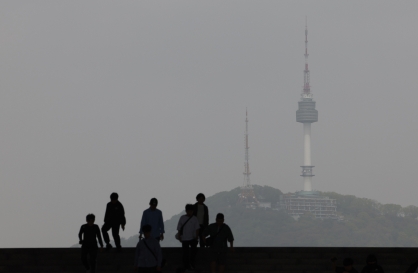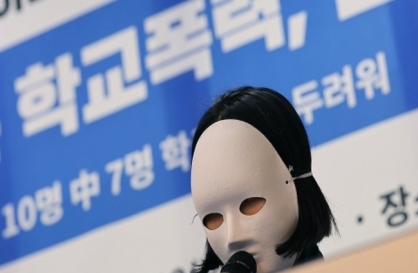Early 20th-century Korea seen through British painter’s eyes
By Claire LeePublished : Oct. 11, 2012 - 20:49
By Claire Lee
Looking at her paintings is almost like watching a documentary about early 20th-century Korea.
From a wedding feast in Korea’s countryside in 1921 to a picturesque night sky in Wonsan, Gangwon Province, British painter Elizabeth Keith (1887-1956)’s works exhibit her obvious attachment and understanding of Korean culture and its people.
Some of her paintings, especially the portraits of the ordinary, are almost journalistic in nature, capturing the essence of her subjects.
She drew little children flying kites, old men playing Korean chess, and a female shaman performing a ritual. She also painted court musicians, noble scholars and their students, and many women of different caste and age groups, including a princess, a Buddhist priestess and a widow.
Local publishing house Comlibro recently published a picture-book, “Eastern Windows,” chronicling Keith’s works and the letters she wrote while traveling Asia. The book is a local edition, and all of Keith’s writings have been translated into Korean.
Keith was a self-taught artist, who never attended art school. The artist, who grew up in London, visited her sister in Tokyo in 1915 ― who was living in Japan with her publisher husband at the time. While staying with her sister in Japan, she decided to travel to China, Korea and the Philippines. She painted watercolors of scenes of everyday life, while travelling the countries. She later learned woodblock painting in Japan, and left more than 100 prints that featured scenes and people in Asia.
The artist returned to England in 1924 and went to France to study the art of etching. She moved back to Asia in the early 1930s and worked there, mostly in the Philippines, until just before the Second World War.
In one of her letters, Keith writes about her experience of visiting Mount Geumgang, which now belongs to North Korea. She visited a Buddhist temple located in the mountain, which is known for its scenic beauty. Keith writes about the temple’s ondol, the traditional Korean heating system, the food, and its kitchen.
“The kitchen of the temple is clean and large, and is very charming,” she writes. “All the kitchen supplies are made of copper and brass. There is a huge caldron made of cast iron in the center. Its wall is painted with the good spirit that is believed to protect the kitchen.”
She also writes about her encounters with the locals, who she describes as extremely polite and gentle. In one of the entries, she writes about how she asked an elderly scholar to be a model for her painting. He wore a garment that is at least 800 years old for the sitting, Keith writes, and sat for an hour for Keith to paint him. He also took her to his ancestor’s grave, though he could never understand Keith without the help of her translator.
The scholar did not like Keith’s painting at first, Keith writes.
“‘Why is my skin yellow in the painting? It’s actually pale and pinkish,’ he told the translator,’” she writes. “I fixed the painting and showed it to him, and he politely said thank you.”
The book also includes local scholar Song Young-dahl’s lengthy essay on Keith’s works and life, which offers much insight about the artist. According to Song, Keith, along with her sister, took care of a young Jewish girl during the Second World War, and organized an exhibition to raise money to support China. She never married, and died in the United States.
“Among many Western artists who drew portraits of Asians, Keith was notably exceptional at understanding the different facial features of the Koreans, the Japanese, and the Chinese,” Song writes.
“For instance, in works of Bertha Lum and Helen Hyde, the faces of their Asian subjects are all identical to each other. But all of Keith’s subjects have distinctive facial features and expressions, enabling us to guess their character and personality. Keith treated all of her subjects as individuals, rather than simply as ‘Asians.’”
Many of Keith’s paintings are currently housed in museums of different countries and individuals, including the Jordan Schnitzer Museum of Art in Oregon, Pacific Asia Museum in Pasadena, California, and the Honolulu Academy of Arts.
(dyc@heraldcorp.com)
Looking at her paintings is almost like watching a documentary about early 20th-century Korea.
From a wedding feast in Korea’s countryside in 1921 to a picturesque night sky in Wonsan, Gangwon Province, British painter Elizabeth Keith (1887-1956)’s works exhibit her obvious attachment and understanding of Korean culture and its people.
Some of her paintings, especially the portraits of the ordinary, are almost journalistic in nature, capturing the essence of her subjects.
She drew little children flying kites, old men playing Korean chess, and a female shaman performing a ritual. She also painted court musicians, noble scholars and their students, and many women of different caste and age groups, including a princess, a Buddhist priestess and a widow.
Local publishing house Comlibro recently published a picture-book, “Eastern Windows,” chronicling Keith’s works and the letters she wrote while traveling Asia. The book is a local edition, and all of Keith’s writings have been translated into Korean.
Keith was a self-taught artist, who never attended art school. The artist, who grew up in London, visited her sister in Tokyo in 1915 ― who was living in Japan with her publisher husband at the time. While staying with her sister in Japan, she decided to travel to China, Korea and the Philippines. She painted watercolors of scenes of everyday life, while travelling the countries. She later learned woodblock painting in Japan, and left more than 100 prints that featured scenes and people in Asia.
The artist returned to England in 1924 and went to France to study the art of etching. She moved back to Asia in the early 1930s and worked there, mostly in the Philippines, until just before the Second World War.
In one of her letters, Keith writes about her experience of visiting Mount Geumgang, which now belongs to North Korea. She visited a Buddhist temple located in the mountain, which is known for its scenic beauty. Keith writes about the temple’s ondol, the traditional Korean heating system, the food, and its kitchen.
“The kitchen of the temple is clean and large, and is very charming,” she writes. “All the kitchen supplies are made of copper and brass. There is a huge caldron made of cast iron in the center. Its wall is painted with the good spirit that is believed to protect the kitchen.”
She also writes about her encounters with the locals, who she describes as extremely polite and gentle. In one of the entries, she writes about how she asked an elderly scholar to be a model for her painting. He wore a garment that is at least 800 years old for the sitting, Keith writes, and sat for an hour for Keith to paint him. He also took her to his ancestor’s grave, though he could never understand Keith without the help of her translator.
The scholar did not like Keith’s painting at first, Keith writes.
“‘Why is my skin yellow in the painting? It’s actually pale and pinkish,’ he told the translator,’” she writes. “I fixed the painting and showed it to him, and he politely said thank you.”
The book also includes local scholar Song Young-dahl’s lengthy essay on Keith’s works and life, which offers much insight about the artist. According to Song, Keith, along with her sister, took care of a young Jewish girl during the Second World War, and organized an exhibition to raise money to support China. She never married, and died in the United States.
“Among many Western artists who drew portraits of Asians, Keith was notably exceptional at understanding the different facial features of the Koreans, the Japanese, and the Chinese,” Song writes.
“For instance, in works of Bertha Lum and Helen Hyde, the faces of their Asian subjects are all identical to each other. But all of Keith’s subjects have distinctive facial features and expressions, enabling us to guess their character and personality. Keith treated all of her subjects as individuals, rather than simply as ‘Asians.’”
Many of Keith’s paintings are currently housed in museums of different countries and individuals, including the Jordan Schnitzer Museum of Art in Oregon, Pacific Asia Museum in Pasadena, California, and the Honolulu Academy of Arts.
(dyc@heraldcorp.com)



![[AtoZ Korean Mind] Does your job define who you are? Should it?](http://res.heraldm.com/phpwas/restmb_idxmake.php?idx=644&simg=/content/image/2024/05/06/20240506050099_0.jpg&u=)














![[K-pop's dilemma] Is Hybe-Ador conflict a case of growing pains?](http://res.heraldm.com/phpwas/restmb_idxmake.php?idx=642&simg=/content/image/2024/05/07/20240507050746_0.jpg&u=)